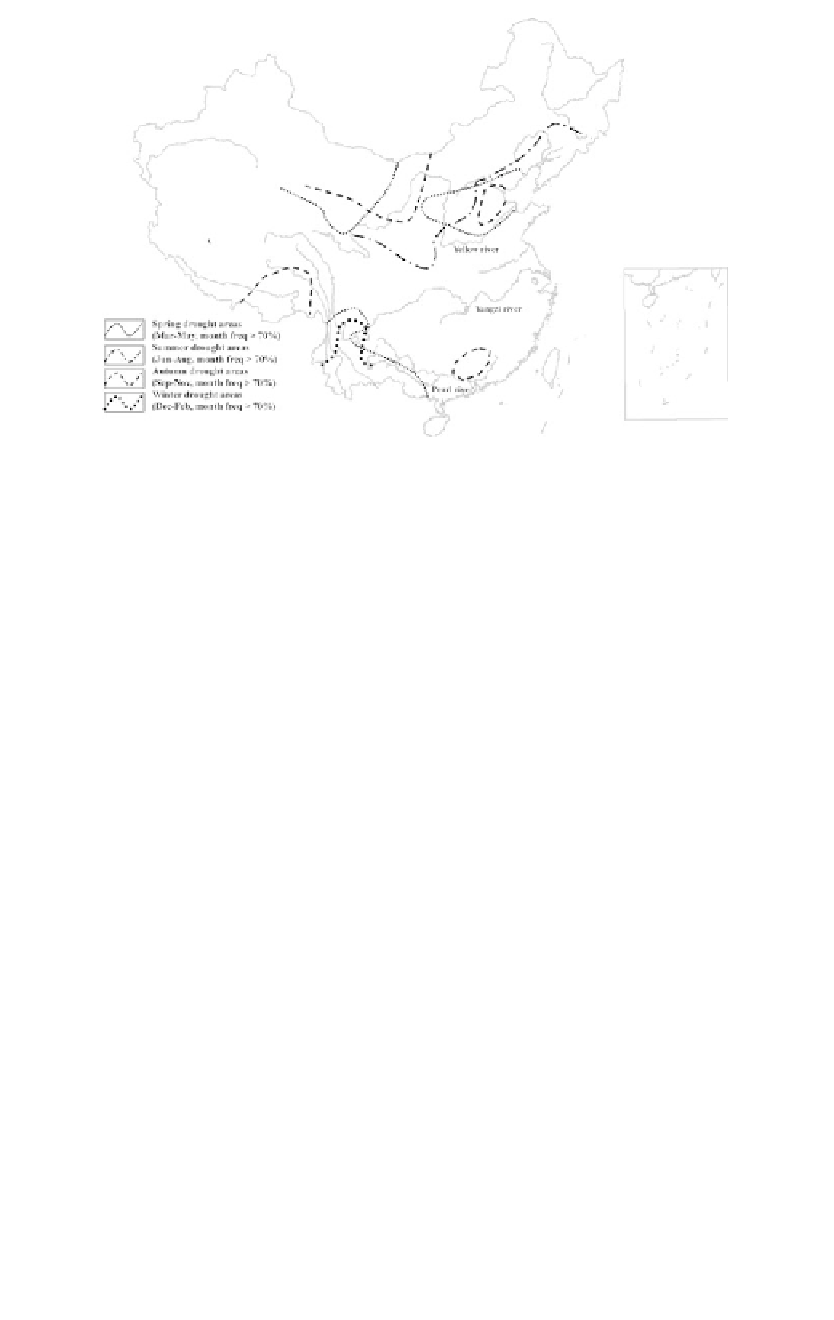Agriculture Reference
In-Depth Information
1
2
3
4
5
6
7
8
9
10
11
12
13
14
15
16
17
18
19
20
21
22
23
24
25
26
27
28
29
30
31
32
33
34
35
36
37
38
39
40
41
42
43
44
45
46
[357
Line
——
-0.1
——
Long
PgEn
Fig
ure 28.2
Spatial distribution of drought intensity and frequency in China, 1951-91.
develops, the western Pacific tropical high pressure is strong, and its re-
gion of influence is relatively greater toward the west and the north. This
results in floods in the Yangtze and the Huaihe rivers during summer due
to above-average precipitation and results in droughts along the Yellow
River in northern China due to below-average precipitation. Meanwhile,
the south of the lower reaches of the Yangtze River experiences drought.
When the sea temperatures in the East Pacific recover and their deviations
are still positive, below-average precipitation occurs along the Yangtze and
Huaihe rivers during summer, leading to drought. During an ENSO year,
below-average precipitation occurs along the Yellow River in southern and
northern China, which also causes drought.
[357
Distribution of Water Resources
Shortage of water resources is one of
the reasons for drought occurrence, particularly in the north. The national
average of water availability exceeds 27000 m
3
/ha, but only 4500 m
3
/ha of
water is available along the Yellow and the Huaihe rivers. Water availabil-
ity is even lower (about 200 m
3
/ha) along the Liaohe and the Hailuanhe
rivers, which does not satisfy the water needs of crops at all. The national
program on “water transfer from south to north” that the government is
planning to undertake will alleviate the existing drought situation in north-
ern China.
C
ultural Factors
Due to the rise in industrial production and crop yields, the demand for
agricultural water has increased four to five times as compared to demand
in the 1950s, but the water supply has remained limited. For example, at











































Search WWH ::

Custom Search